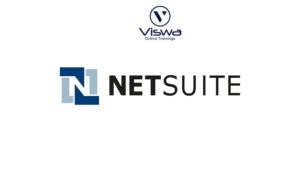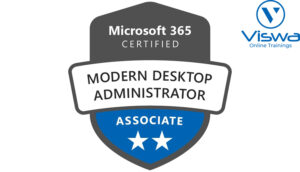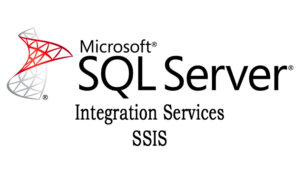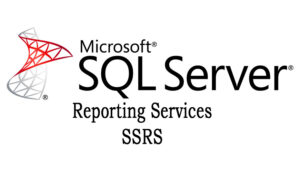Application Packaging Certification Training
One of the top providers of online IT training worldwide is VISWA Online Trainings. To assist beginners and working professionals in achieving their career objectives and taking advantage of our best services, we provide a wide range of courses and online training.
Learners : 1080
Duration : 25 Days
About Course
In our application packaging training, you will learn how to construct a package from installers by using capture techniques and tools like Install Shield Admin Studio. It provides a way to standardize and streamline the process of installing software on users’ devices for companies and other big organizations. You’ll have a solid understanding of how MSI and virtualization work after completing this application virtualization training, as well as know how to use it in real-world scenarios. Enrol right away to get certified.
Application Packaging Training Course Syllabus
✔ Installation of Install shield and Adminstudio
✔ How to use for Install shield Adminstudio for packaging
✔ How to use Install rite
✔ Introduction on Windows Installer
✔ Logical Structure of Windows Installer
✔ Guidelines for making components
✔ Installing Sequences
✔ Upgraded and Patches
✔ Classification
✔ What are Core tables?
✔ Feature Table
✔ Feature Component Table
✔ Condition Table
✔ Directory Table
✔ Publish Component table
✔ Component Table
✔ Creation of Transforms
✔ Secured Transform
✔ Unsecured Transform
✔ Embedded Transform
✔ Installation modes
✔ Active Setup
✔ Run & Run Once Keys
✔ Self Healing
✔ What happens when there is an advertised shortcut?
✔ When does Active Setup Start?
✔ Implementing Active Setup
✔ Delivering Current user data
✔ Difference between Active Setup, Run & Run-Once Keys
✔ Property Types
✔ Order of Property Precedence
✔ Using Properties
✔ Restrictions on Property Names
✔ Initialization of Property Values
✔ Getting and Setting Properties
✔ Setting Public Property Values on the Command Line
✔ Clearing an Installer Property
✔ Using Properties in Conditional Statements
✔ Using a Directory Property in a Path
✔ Custom Actions
✔ Structure of Registry
✔ Registry Storage Space
✔ Predefined keys
✔ Registry Hives
✔ Categories of Data
✔ Editing the Registry
✔ Opening, Creating, and Closing keys
✔ Registry Table
✔ What are services?
✔ How to view services?
✔ Operation on services
✔ Why is file versioning required
✔ Default file versioning
✔ File Table
✔ What is cab file?
✔ Cabinets and Compressed Source
✔ Introduction to virtualisations
✔ App v Sequencing
✔ Deployment of application
✔ Introduction to VBScript
✔ Creation of install script and uninstall script
✔ Introduction to PSADT
✔ Creation of install script and uninstall script
✔ Introduction to Batch Script
✔ Creation of install script and uninstall script
| Live Instructor Based Training With Software |
| Lifetime access and 24×7 support |
| Certification Oriented content |
| Hands-On complete Real-time training |
| Get a certificate on course completion |
| Flexible Schedules |
| Live Recorded Videos Access |
| Study Material Provided |
Application Packaging Training - Upcoming Batches
7th NOV 2022
8 AM IST
Coming Soon
AM IST
5th NOV 2022
8 AM IST
Coming Soon
AM IST
Don't find suitable time ?
CHOOSE YOUR OWN COMFORTABLE LEARNING EXPERIENCE
Live Virtual Training
-
Schedule your sessions at your comfortable timings.
-
Instructor-led training, Real-time projects
-
Certification Guidance.
Self-Paced Learning
-
Complete set of live-online training sessions recorded videos.
-
Learn technology at your own pace.
-
Get access for lifetime.
Corporate Training
-
Learn As A Full Day Schedule With Discussions, Exercises,
-
Practical Use Cases
-
Design Your Own Syllabus Based
Application Packaging Training FAQ'S
Application packaging refers to the process of developing an installer for an application. It often contains packages of binary files offered by developers.
When source files are packaged, they do not come in the form of a package, however when they are re-packaged, they do come in the form of a package, which might be an MSI or a legacy package (such as an executable, batch file, etc.).
Repackaging (Customised Installation) is the procedure of encoding the modifications made by an Installation Programme (Package), and it is tailored to support business standards and distribution techniques.
To refer to it as repackaging, even producing, setup capture is not required.Application repackaging is another name for MST files or.ISS files.
- Review the packaging requirements (User Requirement Review)
- Analyze the vendor package (Tech Review)
- Repackage the application (Setup capture)
- Customize the package (Scripting)
- Test the package (Testing & UAT)
- Release the package to end users (Deployment)
Get ahead in your career by learning Application Packaging through VISWA Online Trainings
The most common reasons for Re-packaging are as follows
- Customized Installation
- Reduce Support Costs
- Self Repair
- Source Resiliency
- Unattended Install
The problems with Legacy Installations.
- High Support Costs
- Difficult & labor Intensive deployment & management
- Fragile Installs & un-installs
- Wise for Windows Installer
- Wise Package Studio
- Install Shield
- SMS Installer
- Marimba
- WIX
- SharpDevelop
- Visual Studio
Reviews
 Vishnu Gadipudi2023-08-20I Enrolled in VISWA Online Trainings for IBM Integration BUS course . Recently I Completed IBM Integration BUS Batch. It was Really Awesome Experience. Best Place To Learn , Experienced Trainer, Gives Us High Level Knowledge....
Vishnu Gadipudi2023-08-20I Enrolled in VISWA Online Trainings for IBM Integration BUS course . Recently I Completed IBM Integration BUS Batch. It was Really Awesome Experience. Best Place To Learn , Experienced Trainer, Gives Us High Level Knowledge.... Navya Biradavolu2023-08-20I was enrolled for looker Bl Tool,it was amazing experience . especially soft skill batch is one of my favourite batch . overall learning process is quite impressive.
Navya Biradavolu2023-08-20I was enrolled for looker Bl Tool,it was amazing experience . especially soft skill batch is one of my favourite batch . overall learning process is quite impressive. Indla sneha2023-08-20I have joined I have joined VISWA Online TRAININGS for Java full stack course and i have completed Advance Java module. I had a good knowledge of Hibernate, spring,spring boot,spring MVC. Tutor has knowledge in depth and is supportive. Srinadh sir solved all our doubts....
Indla sneha2023-08-20I have joined I have joined VISWA Online TRAININGS for Java full stack course and i have completed Advance Java module. I had a good knowledge of Hibernate, spring,spring boot,spring MVC. Tutor has knowledge in depth and is supportive. Srinadh sir solved all our doubts.... bindu hima2023-08-20I am recently completed Talend course and trainer is Rajendra very professional and helpful. All the doubts were solved in a precise manner.
bindu hima2023-08-20I am recently completed Talend course and trainer is Rajendra very professional and helpful. All the doubts were solved in a precise manner. Tarunasree Gowra2023-08-20"I truly enjoyed this course." Chaitanya sir fantastic-very knowledgeable. Sir give us very informative and clear instruction on how to achieve the goal. Thank you!
Tarunasree Gowra2023-08-20"I truly enjoyed this course." Chaitanya sir fantastic-very knowledgeable. Sir give us very informative and clear instruction on how to achieve the goal. Thank you! Tejaswini Kommu2023-08-20Overall Linux Admin sessions batch was very good. Mr. RAM Krishna teaching was very helpful to remind our basic concepts in linux & networking.
Tejaswini Kommu2023-08-20Overall Linux Admin sessions batch was very good. Mr. RAM Krishna teaching was very helpful to remind our basic concepts in linux & networking. Gopanaboina Mounika2023-08-20It was great learning with such a great and experienced staff. Praveen Sir (Oracle EPM Cloud - FCCS) was very helpful and operations team also very helpful in solving any minor problems students go through process.
Gopanaboina Mounika2023-08-20It was great learning with such a great and experienced staff. Praveen Sir (Oracle EPM Cloud - FCCS) was very helpful and operations team also very helpful in solving any minor problems students go through process. Jyothi Gutlapalli2023-08-20I like to share my experience which provide lots of courses and one of those I recently completed my Salesforce BA Course and I like to tell you it was a great experience and my knowledge and confidence is really boosted after completing this course.
Jyothi Gutlapalli2023-08-20I like to share my experience which provide lots of courses and one of those I recently completed my Salesforce BA Course and I like to tell you it was a great experience and my knowledge and confidence is really boosted after completing this course. Harshibandi2023-08-20Good experience and great learning platform for Hyperion Essbase and Planning. The faculty is also well trained and soft spoken.
Harshibandi2023-08-20Good experience and great learning platform for Hyperion Essbase and Planning. The faculty is also well trained and soft spoken. Chaitu Viswa2023-08-20It was very good session for QlikView. I would like to thank to teacher Mr.Chandu for providing guidance for the required modules. Thanks VISWA Team for giving apportunity to leran new skills.
Chaitu Viswa2023-08-20It was very good session for QlikView. I would like to thank to teacher Mr.Chandu for providing guidance for the required modules. Thanks VISWA Team for giving apportunity to leran new skills.




